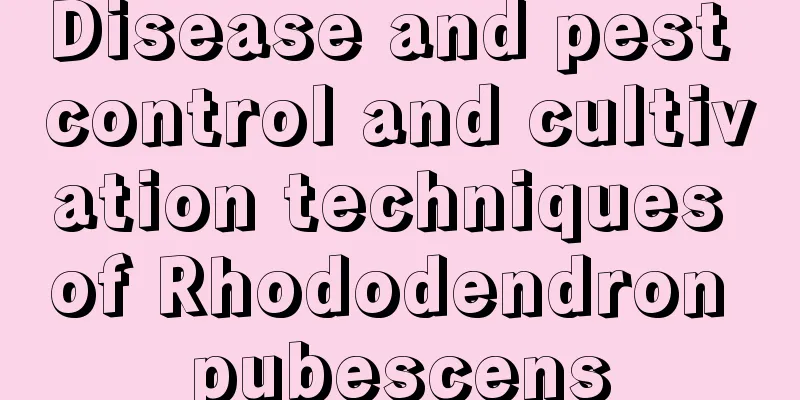Disease and pest control and cultivation techniques of Rhododendron pubescens

|
The hairy azalea, also known as the splendid azalea , has rich colors, beautiful flower shapes, profuse flowering, and strong adaptability. It is one of the mainstream varieties of cultivated azalea in China today. So what are its specific cultivation techniques ? How to prevent and control diseases and pests? Let’s learn more about it below. Cultivation technology of Mao Juan 1. Planting Select mature and healthy seeds, place them in moist growing medium or vermiculite, and lightly cover with a layer of fine soil. Make sure the culture medium remains moist and at a moderate temperature. The germination time and success rate of seeds will vary, generally taking from several weeks to several months. Once the seedlings have developed a pair of true leaves, they can be transplanted into individual culture containers. 2. Cuttings Select healthy plants and cut healthy branches from their tops or side branches. Cut these branches into small sections of moderate length, retaining 2 to 3 leaves in each section, remove the bottom leaves, and retain 2 to 3 cm of stem. Insert these cuttings into moist growing medium or vermiculite, making sure the stems are covered with soil and the growing medium is kept moist. Place the grafted branches in an environment with suitable temperature for cultivation. When the cuttings have new leaves and show signs of healthy growth and development, they can be transplanted into new culture containers. Disease and Pest Control of Rhododendron 1. Brown spot disease Small brown or black spots appear on the leaves, gradually expanding to form patches. In severe cases, the leaves turn yellow and fall off. In the early stage of the disease, Bordeaux mixture or carbendazim can be sprayed for prevention and control. 2. Root rot The roots turn black and rot, the plant grows weak, and the leaves turn yellow. For prevention and control, the infected plants should be dug out immediately, the diseased roots should be cut off, and they should be replanted in disinfected soil, and the roots should be irrigated with a solution of carbendazim or carbendazim. 3. Red spider Yellow or white spots appear on the leaves. In severe cases, the leaves turn grayish white, affecting photosynthesis. Abamectin, cypermethrin and other pesticides can be used for spray control. 4. Aphids It mainly occurs on the back of leaves and tender shoots, causing the leaves to turn yellow and curl. Control methods include washing the infested areas with water, hanging yellow sticky insect boards, and spraying with imidacloprid. In general, although Rhododendron alopecuroides is popular as an ornamental flower , there are still some challenges and problems in its cultivation and maintenance techniques. The key is to pay attention to good planting methods and disease and pest control, which are important means to maintain the health of Rhododendron.
|
<<: The most complete water-soluble fertilizer formula ratio
>>: The correct way to repot a fortune tree
Recommend
How to grow white palm more vigorously
1. Light Too much or too little is not good. With...
The north balcony does not receive enough light, what should I do to grow flowers? Choose these "5 types" and the leaves will grow wildly even in the shade!
Phalaenopsis As the New Year is approaching, many...
Good luck plants for home placement
chrysanthemum Chrysanthemum is a traditional famo...
The role of the Gordian knot
The role of the Gordian knot: absorbing radiation...
Cultivation methods and precautions of golden banyan
The golden banyan tree is easy to grow and can of...
Can banyan tree branches be grafted to survive?
1. Can it be inserted alive? Banyan tree branches...
Is Chayote a Fruit or a Vegetable?
Is Chayote a fruit or a vegetable? Chayote is bot...
How to prune potted grapefruit
Choose the right time When pruning potted grapefr...
Why does Mimosa pudica shrink?
1. Principle At the base of the petiole of the mi...
Notes on repotting Venus Flytrap
Notes on repotting Venus Flytrap When repotting t...
Can I grow lilies at home?
Can I grow lilies at home? You can grow lilies at...
What are the varieties of Allium
Purple Sensation Purple Sensation, as the name su...
How long does it take for the green radish to grow after repotting?
1. Duration of seedling acclimatization After rep...
Can Jingzhihuajin be dried in the sun?
one. Can I sunbathe? Of course, this plant can wi...
Types of succulents, what are the succulents suitable for beginners
1. Types of Succulents There are many types of su...









